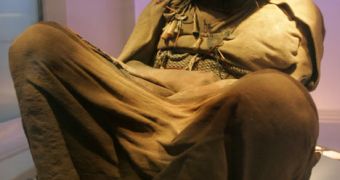Just like the Aztecs, the Inca empire had only one century to flourish. The empire was built around the city capital of Cuzco. The Incas conquered and assimilated their neighboring populations so that, at the arrival of the Spaniards, their empire had about 12 million inhabitants, speaking 20 different languages and belonging to over 100 distinct cultures. The Inca formed the largest empire in the pre-European South America, stretching from Ecuador to Chile (but their power center was in Peru), till they were conquered by Spaniards led by Francisco Pizarro around 1533.
During their expansionist politics, Incas were less violent than Aztecs. Local rulers kept their functions and ranks, but their sons were brought to Cuzco and grown up in the Inca spirit, religion and beliefs. When celebrating mythic events, dedicated to their gods, Inca used to make human sacrifices. Children were considered pure beings, so their sacrifice was a homage brought to the gods and a guaranty of eternal life of the spirits in the world of the divinities. The snowed peaks of the Andes not only controlled the weather but also animal fertility and crops.
In the '90s, archaeologists discovered at Mount Llullaillaco, a volcano located between Argentina and Chile at an altitude of 6,740 m (22,500 ft), tombs proving the practice of the ritual sacrifices.
The ancient Inca chose children as young as 6, but also as old as 15, "fattened them up" for a year and sent them on a sacrifice pilgrimage. The children had a hair cut first a year and then six months before their sacrifice. Sons and daughters of local rulers were selected for sacrifice, this way, the Incas spread fear into their governed populations. Some girls, around the age of four, were put under the custody of priestesses; some would later be given as wives to local nobles, others made priestesses and others sacrificed. The children's early diet was initially based on potatoes, but in the last year of life, they received corn, an elite food for the Inca, and animal protein, perhaps charki (dried llama meat).
3 to 4 months before death, the children started their pilgrimage to the heights of the Andes, probably from Cuzco, the imperial capital. Priests accompanied the children, and, during the journey ritual, dances and incantations were accomplished. Because of the tiredness, altitude sickness caused by low oxygen and administered drugs (like maize beer (chicha) and coca leaves), in the moment of the sacrifice children were semiconscious. Some children may have been left to succumb due to exposure to the cold. But others had a horrific death: scientists found vomit and diarrhea on their clothes, pointing to a violent death. The vomit contained the hallucinogenic drug achiote, also encountered in the stomach and feces. They were likely to have been asphyxiated, the body being crushed by their clothes, so strongly that the ribs and pelvis were sometimes broken. The bodies of the sacrificed children were mummified by the dry cold of the Andes, including hair and inner organs. In fact, Inca children represent one of the best naturally cold preserved mummies.
The clothes and the tunics of these children were drew and marked with mystic symbols and signs. Around the mummies statuettes, ceramics, baskets with food, coca bags were found, all being artistically adorned and all placed with a specific meaning.

 14 DAY TRIAL //
14 DAY TRIAL //